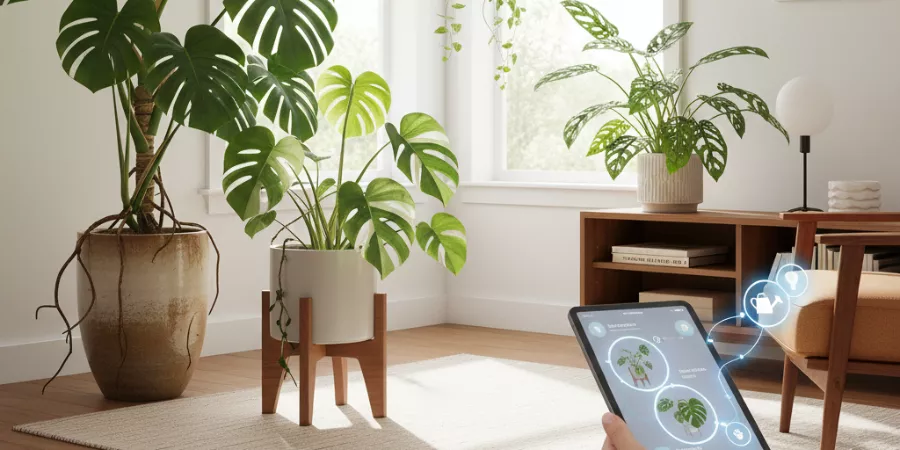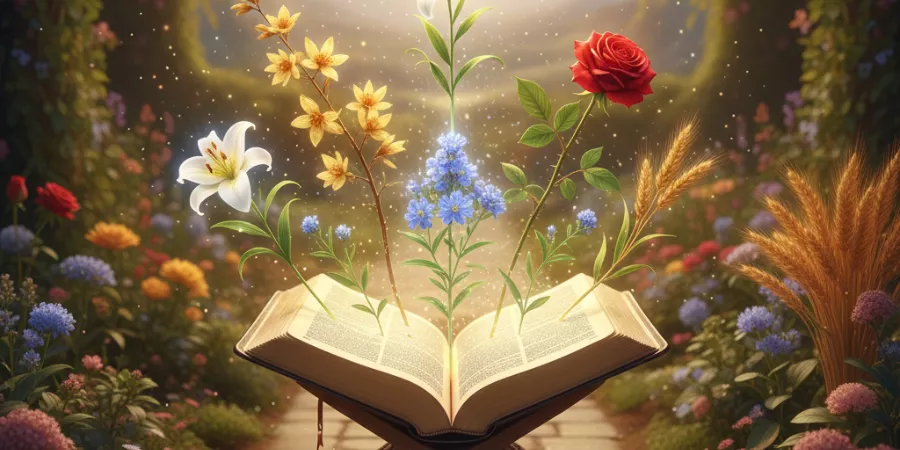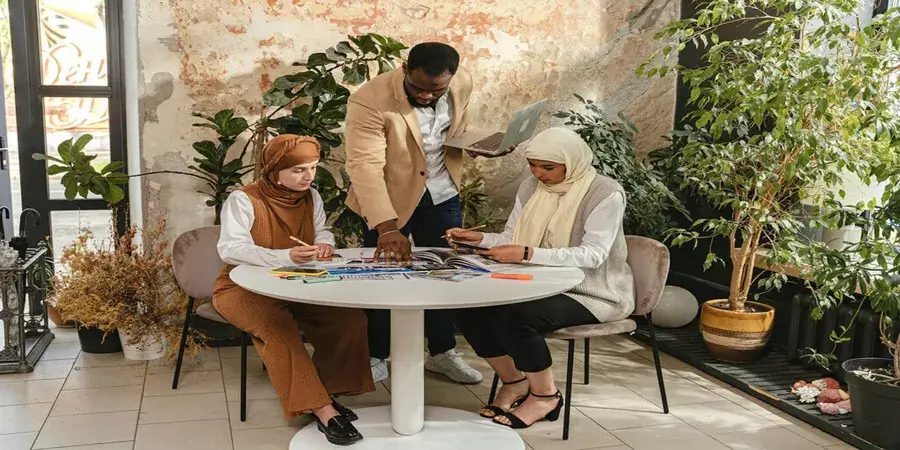When you walk into a plant shop and see a lush leaf with bold splits or sculptural holes you may well be looking at a Monstera species. According to plant experts, the Monstera genus includes some sixty species in the Araceae family.
Among these, the few that appear in homes and Monstera types for indoor spaces vary widely in appearance, growth habit and care requirements. This means recognizing the Best Monstera types matters for plant success. Whether you live in a cozy flat in Pimpri or a spacious home, knowing what you are buying makes all the difference.
What Defines a Monstera and Its Key Traits
Monstera plants are climbing or vining evergreens native to Monstera habitat in tropical Central and South America. They have aerial roots or climb supports when grown indoors. What many people notice first are the fenestrated leaves, that is the holes or splits in the leaves. For example, the holes allow light to reach lower leaves in the wild.
Alongside this, Monstera leaves often start out smaller and whole, then mature into larger, split or perforated forms. The difference between Monstera varieties often lies in leaf shape, size, colour, variegation, and the size or presence of fenestrations. So when you see “Monstera type,” what it really means is a different species or cultivar with a distinct character.
Monsteras come from tropical Central and South America. They belong to the arum family (Araceae) and as a genus include approximately 59 species. In the wild many Monstera plants behave as hemiepiphytes, they begin their life on the forest floor, attach to tree trunks via aerial roots, climb upward toward canopy light and sometimes send roots back into the soil. What this means is that indoors they may prefer a climbing support or space to expand rather than staying compact.
Key Traits:
- Leaves and fenestrations: The most iconic trait: the leaves. Monstera leaves are typically large, leathery and evergreen. Many species develop splits (lobes) or holes (fenestrated leaves) as they mature.
- Why the holes and splits? In nature this adaptation helps the plant let light pass to lower leaves, gives less resistance to wind and heavy rain, and allows the large leaf surface to be efficient without tearing.
- Important caveat: juvenile Monsteras often lack fenestrations or splits. The leaf shape may change as the plant finds vertical support and matures. For Indoor Monstera plantsthis means if your Monstera has whole leaves with no holes, it might simply be in a juvenile stage or lack the right conditions to develop more dramatic foliage.
- Roots, stems and climbing structures:Monstera aerial roots are one of the features that make them so distinctive. These roots are hairy, cord-like roots that develop from the stem of the plant. They are used for gripping surfaces as well as for getting moisture and nutrients from the organic matter or the bark of a tree in their natural environment. Stems tend to be robust, sometimes thick, and bear leaf scars where leaves have dropped. In nature the plant can climb dozens of metres high on tree trunks. For indoor growers giving a moss pole, trellis or vertical structure supports the natural habit and often leads to larger leaves and more fenestration, especially for climbing houseplantslike these.
- Adaptations and care implications: Because Monsteras come from warm, humid and filtered-light forests, certain Monstera care tipsapply:
- They prefer bright, indirect light rather than harsh full sun, which can scorch leaves.
- Soil should drain well and allow air to the roots; overly dense or soggy soil may lead to root problems.
- Humidity and support matter the increased moisture creates aerial roots and supports climbing; however, let alone letting the plant develop naturally, a column or trellis will come in handy.
- Leaf size and fenestration often correlate with space to climb and light availability. A plant kept too low or without support may stay at juvenile leaf form.
- Some parts of Monsteras especially unripe fruit or sap that are toxic via calcium oxalate crystals; in the wild one species bears edible fruit only when mature.
Popular Monstera types for Indoor Spaces
- Monstera deliciosa
This is the stereotypical Monstera that the majority of people would picture big shiny leaves, deep splits and holes (fenestrations) as the plant grows. The plant is native to the tropical parts of Central America and is a good indoor plant.
Why it works indoors It can handle a variety of light levels though bright indirect is best, and it gives that lush jungle feel without excessive fuss. Because of its size and climbing habit, having a moss pole or vertical support makes a noticeable difference for Indoor Monstera plants and other tropical houseplants.
What to be aware of It can grow large. If space is limited, you will want to select a younger plant or manage growth through pruning or support.
- Monstera adansoniialso called the Swiss Cheese Vine
This variety brings a slightly different form. The leaves tend to be smaller, with oval or irregular holes, and the plant often vines or trails rather than strictly climbing.
Why it works If you have a shelf, a hanging basket or a space where it can drape, this type adds elegance without dominating the room. It brings texture rather than sheer scale and fits well within Monstera types for indoor spaces.
What to note Because the leaves are thinner and the plant trails or vines, it may require a little more attention to support its shape and ensure light reaches all parts.
- Monstera borsigiana
What people usually mean with this phrase is the plant that is considered as a one of the close family members of Monstera deliciosa but smaller and more compact. It has a similar appearance, the beautiful leaves and the impression of a tropical vine, but in a size that is more suitable for smaller rooms and aligns with Best Monstera types for small spaces.
Decision to use it In case you are fond of the look of Monstera and reside in a flat or a place with limited height, then this kind of plant will provide you with the fashion but not the giant size that is overpowering.
What to keep in mind Even though it is more compact, it still benefits from support and space to expand. Also, fenestrations may develop more slowly if light or support are lacking.
- Variegated or Unique Cultivars for more advanced collectors
While the 3 types above are excellent for many indoor spaces, there are special cultivars that bring extra visual drama. Examples include the variegated Monstera Thai Constellation or Monstera Albo Variegata leaves with creamy white or yellow patches, and types like Monstera siltepecana with silvery sheen.
Why they are appealing They serve as focal points; and, the indoor plants must have been the embodiment of artistic design to be marked with these characters and represent Rare Monstera types for indoor growing.
What to be careful about Variegated forms grow slower and may need brighter light. They tend to cost more, and their care demands can be higher. If you’re newer to indoor plants, maybe start with the simpler types.
How to Pick Among These Best Monstera types
Here are some quick thoughts to guide your decision:
- Space and height available If you have tall ceilings and a spot for the plant to climb, go for the classic deliciosa. If your vertical space is limited, borsigiana or a trailing adansonii may suit better.
- Light conditions Variegated cultivars need stronger indirect light to maintain their colour. If your room is dim, stick to green-leafed types suited to Best Monstera for low light.
- Your intention Are you after a statement piece or a subtle accent Deliciosa gives scale, adansonii gives texture, and variegated types give flair.
- Ease of care The simpler green-leaf types are more forgiving. If you are comfortable with plant care and want something special, the variegated ones deliver, but accept the trade-offs and refer to Monstera indoor care.
- Growth habit and support All Monsteras like some climbing support or at least a way to show off their forms. Skip the pole or trellis and you may end up with smaller leaves and fewer splits which creates Differences between Monstera varietieswhen conditions are not ideal.
Unique and Less Common Best Monstera types
Here are three unique and less common types of Monstera that plant-enthusiasts often look for — what makes each one special, how they differ from the more common species, and whether they might suit your indoor space.
- Monstera Siltepecana
Monstera siltepecana comes originally from southern Mexico and Central America, and it stands out because of the silvery sheen on its younger leaves and the climbing habit it retains indoors. When the plant is juvenile, leaves often show elongated shapes with silvery variegation. With age and proper support, the leaves may shift toward fenestration splits or holes, which ties into Differences between Monstera varieties.
This type works for someone who wants something different from the classic large-split Monstera look. Because the silver tones provide contrast, it can serve as an accent. At the same time, it still climbs and needs space or a structure.
Care wise: Provide bright indirect light, allow it to climb, keep the soil fairly free-draining, and maintain moderate to high humidity. The silver trait may be more pronounced under strong but indirect light.
A caution: While not extremely rare, certain forms of siltepecana for example with heavier silver variegation or compact form fetch higher prices and may demand more careful conditions within Monstera indoor care needs.
- Monstera Dubia
Monstera dubia is considered a shingling Monstera, the leaves lie flat against the surface the vine climbs, almost like shingles on a roof, rather than hanging free or broad. In its juvenile stage the leaves are small and whole; as the plant matures and climbs, the leaves can become larger and potentially develop fenestrations though many home-grown plants may remain in the juvenile look for long periods.
This behavior makes it ideal if you plan to mount the plant on a flat surface or give it a narrow vertical support. It offers a textured, layered look rather than large bold leaves. Because it is less common than the classic types, it may cost more or be harder to source. Its unique growth habit means you should plan for a proper support and sufficient light to encourage the transition to larger leaves in line with Best Monstera types that climb.
From a care perspective: Provide bright indirect light, avoid letting it lie in deep shade or in stagnant air. Ensure the surface it climbs allows the roots or stem to grip; in the wild it climbs bark or trees, so mimic that for healthier Indoor Monstera plants.
- Monstera Obliqua
Monstera obliqua is among the rarest and most coveted of the Monstera species. Its leaves are extremely perforated, in mature specimens the holes can occupy much of the leaf surface.
Because of its delicate nature and rarity, it is considered better suited to advanced growers who can provide stable conditions, high humidity and good light. Some of the plants sold under this name are actually other species or look-alikes, so provenance and identification matter.
For the serious collector, obliqua represents a dramatic form. For a casual indoor planter, it might present more challenges higher cost, slower growth, more specific needs and fits into Rare Monstera types for indoor growing.
In terms of care: Treat it like a tropical understory climber. Bright but indirect light, good humidity, stable temperatures and a support structure are key. Because leaves are so fine and perforated, they may show stress more visibly if conditions slip.
Variegated and Rare Monstera types for indoor growing
- Monstera Thai Constellation
This cultivar is a variegated form of the well-known Monstera. It features creamy white and light yellow speckles or patches set against dark green leaf surfaces. What stands out: the pattern of variegation is fairly stable it is tissue cultured which makes it more accessible compared to some other variegated types.
Care considerations: Because of its variegation, it needs brighter indirect light than a plain green Monstera. Less light and the white or cream parts may remain unproductive or the plant may revert.
In short: If you want a show-piece Monstera with striking variegation and are prepared to give it better light and care, this cultivar is a strong choice among Best Monstera types for collectors.
- Monstera Albo Variegata
This is another coveted cultivar of Monstera or a variant often labelled as closeness to it known for large white sectors or blocked variegation, sometimes entire leaves are nearly white with green veins.
What makes it rare: The genetic mutation is chimeric in many cases which makes propagation slower and less predictable.
Care implications: Because substantial parts of the leaves are white and thus lack chlorophyll, the plant’s growth may be slower, and it is more vulnerable to stress light, root, humidity. More attention needed to avoid reverting to plain green or even dying off.
Summary: If you are an advanced plant owner looking for a prestige plant and are comfortable with precise conditions, the Albo Variegata offers one of the highest-impact looks.
- Monstera Aurea Variegat
This lesser-known type brings yellow or lime-yellow variegation rather than white. The leaves might have blocks of yellow mixed with green.
Why it matters: It offers a slightly different aesthetic than the white-variegated types, more warmth in tone. Because it is less common, sourcing may be harder.
Care pointers: Same base care as other variegated Monsteras bright indirect light, well-draining soil, support for climbing but with vigilance because the yellow parts still reduce chlorophyll.
In short: A great option for someone who wants variegation but with a slightly different color character than white-on-green while still belonging to unique Monstera varieties.
What this Really Means For You
Choosing a variegated or rare Monstera type adds a layer of commitment and reward. Here’s the breakdown:
- Why choose one: Visual impact, unique foliage patterns, and rarity mean these plants become focal points in a room, especially among Monstera plants for beginnerslooking to expand into collector territory.
- What to consider: Light, space, support, humidity and growth speed. If you select one of these types and place it in low light with minimal support, you could end up frustrated.
- Balance of risk and reward: The more variegated white blocks, yellow patches, sectorial splits, the higher the visual reward, but also higher maintenance risk.
- Fit with your space: If your room gets good bright indirect light, has vertical height or a climbing support, a variegated Monstera could shine. If you have dim light or limited space, maybe a regular green Monstera would be more conservative and easier to keep happy which ties into How to choose the right Monstera for your home.
Benefits of Keeping Monstera
Besides Monstera, an indoor plant, to be a pretty decorative item, it also has various other benefits.
Initially, such a plant can also be a contributing factor to have fresh and clean air at home or office. Its wide leaves can co emit different gaseous pollutants like formaldehyde and benzene, which leads to oxygen desorption.
Moreover, it helps in establishing a healthier and more comfortable micro climate inside the house. Since they are releasing the water they absorb from the soil through their leaves a phenomenon called transpiration, Monsteras increase the humidity level a bit, thus those suffering from dry skin or bad air in the house can be relieved.
Furthermore, nurturing a Benjamina plant species like Monstera involves some psychological benefits. Apart from being an indoor decor, the gorgeous green leaves and nature related curves of the plants help the human brain relax and feel close to nature. According to the research, it has been proved that planting trees around can contribute in reducing anxiety and increasing focus.
So to sum up, the Monstera plant is not just a beautiful thing which is added to your home. It purifies the air, humidifies the atmosphere, and is a source of mental well-being, only requiring moderate care and basic Monstera care tips.
Conclusion
By having a Monstera around, you are doing more than just adding a leaf friend. What it essentially means is that you are opting for a plant that visually stunning gives you good health benefits as well.
Those hallmark big, holey leaves are the plant’s climb and growth in the rainforest, which is the natural Monstera habitat of the plant. Giving it the proper light, support and soil, it will be a spectacle of nature with its stunning leaves and by showing its full form. Living conditions that resemble its natural habitat will result in even better growth of the plant and align with Monstera indoor care.
The green and healthy leaves basically serve as a bridge between man and nature. Various studies on indoor plants conclude that they have a tremendous positive effect on the psychological state, stress levels and overall health when plants are present.
The bottom line is thus fit the Monstera variety with your surroundings, satisfy its basic needs and do not forget to leave it space to climb and grow. If you adhere to that, you will convert a trendy houseplant into a living feature that thrives rather than fails, helping you understand How to choose the right Monstera for your home and also identifying Monstera plants for beginners.













